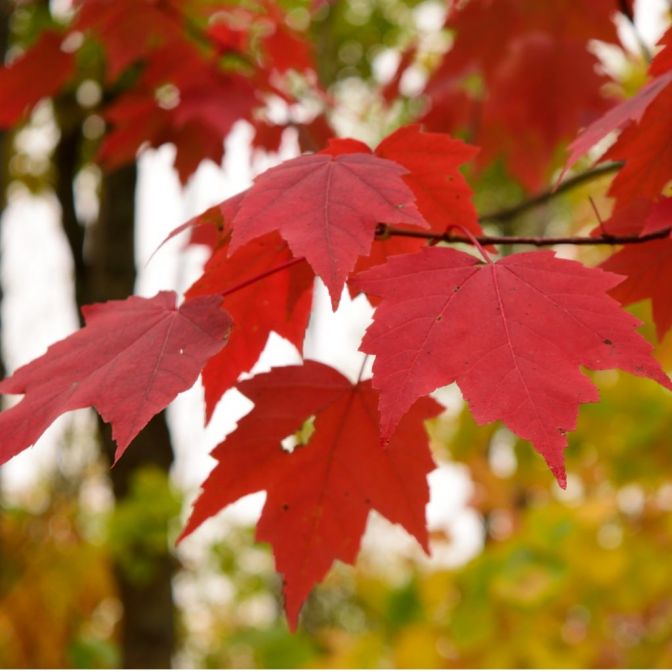Red Maple
Plant Type: Dormant, bare-root
Zones: 3-9
Soil Type: Clay, Loamy & Sandy Soils
Site Selection: Full Sun, Partial Sun, Shade
Mature Height & Width: 40-60' Height and 35-45' Spread
Growth Rate: Moderate - 12-24" per year on average
Moisture Requirements: Dry to wet soils






Red Maple
Acer rubrum
The Red Maple provides you with red color year round. This tree is very adaptable to most soil types and moisture conditions. Showy red flowers appear in spring, reddish twigs and buds display in winter. Even the stems on the green leaves are red in summer. The autumn color makes this one of the most popular Maple trees. Brilliant ruby red, orange and yellow leaves with red stems adorn the Red Maple tree as temps cool off and days shorten. This is the tree that made fall famous.
The Red Maple is sometimes known as the Scarlet Maple, Swamp Maple, Soft Maple, Carolina Red Maple, Drummond Red Maple, or the Water Maple.
The Red Maple is a handsome tree with lighter grey to silver bark and a round form. Every season the tree shows you something red. In the spring, its red flowers open up. New leaves have red around the edges before turning green. The stems of leaves are a nice red color. In fall, the red color is absolutely brilliant.
This tree is a good choice for your lower, wetter sites as long as they dry out sometimes. The Red Maple will also perform well on your upland areas. This maple tree is very versatile in almost every way. The tree will do well in full sun to full shade, almost all soil types and moisture contents.
Fun fact: The Red Maple is the state tree of Rhode Island.
Common uses for the Red Maple include:
- Shade tree with traces of red in all seasons
- Amazing fall display of red color
- Pulpwood and saw timber
- Maple syrup production
The seeds of the Red Maple are eaten by squirrels. The young shoots and leaves are eaten by deer and rabbits. Red Maples provide cover for many species of wildlife. The screech owl, pileated woodpecker, and common flicker nest in its cavities. The cavities in Red Maples in river floodplain communities are often well suited for cavity nesters such as the wood duck.






